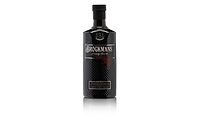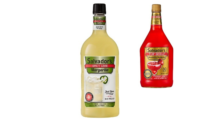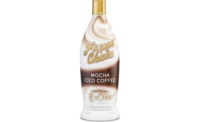Increased adoption core to cocktail mixer market growth
Drink mixes experience declines

As the saying goes, “slow but steady wins the race.” Although the growth has been slow, cocktail mixers are posting incremental year-over-year volume growth of about 2 percent, says Eric Schmidt, director of alcohol research at New York-based Beverage Marketing Corporation (BMC).
Cocktail culture, consumer experimentation and mixologist innovations are the core cocktail mixer growth-drivers, and younger legal-drinking-age consumers are at the center of these trends, he adds.
“The growth of cocktail culture has had a large impact on mixer consumption on-premise. Consumers love innovation and authenticity, and they are also embracing classic cocktails,” Schmidt says.
Schmidt notes that traditional cocktails — Margarita, mojito, etc. — continue to hold the lion’s share of the cocktail mixer market.
(Individual Brands)

The Top 5 liquid cocktail mixers by individual brand for the 52 weeks ending Jan. 28, according to Information Resources Inc. (IRI).
Source: Information Resources Inc. (IRI), Chicago. Total U.S. supermarkets, drug stores, mass merchandisers, gas and convenience stores, military commissaries, and select club and dollar retail chains for the 52 weeks ending Jan. 28.
When it comes to at-home consumption, however, only 25 percent of consumers report drinking cocktails at home, and of those respondents, 35 percent report using any cocktail mixer that requires the addition of alcohol, according to Chicago-based Mintel’s September 2017 report titled “Alcoholic Beverage Mixers – US.”
“Tropical cocktails lead consumption (15 percent), meaning products geared toward tropical drink types have the strongest chance of resonating with current home drinkers,” the report states. “Continued emphasis on cocktail culture makes classic cocktails an area of focus for growing users, especially men and respondents aged 25-44. Beer and wine lead for alcohol consumption at home, suggesting the opportunity for mixers to pair with these products.”
(Individual Brands)

The Top 5 liquid fruit drink mixes by individual brand for the 52 weeks ending Jan. 28, according to Information Resources Inc. (IRI).
Source: Information Resources Inc. (IRI), Chicago. Total U.S. supermarkets, drug stores, mass merchandisers, gas and convenience stores, military commissaries, and select club and dollar retail chains for the 52 weeks ending Jan. 28.
Additionally, the market research firm notes that natural and versatile mixers are resonating and could increase consumption of these products.
“Considering the relatively low penetration of mixers, increasing adoption will be key in growing sales. One in five respondents who drink cocktails or mixed drinks at home said mixers that go with multiple types of liquor would encourage them to purchase more,” the report states. “The same percentage said that mixers made with all-natural ingredients would drive increased adoption.”
Going further, the Mintel report highlights that coffee- and tea-based mixers could be an opportunity for the category to reach younger legal-drinking-age consumers, considering the growth (24 and 21 percent, respectively) in use of these products for at-home cocktails.
(Individual Brands)

The Top 5 fruit drink mixes by individual brand for the 52 weeks ending Jan. 28, according to Information Resources Inc. (IRI).
Source: Information Resources Inc. (IRI), Chicago. Total U.S. supermarkets, drug stores, mass merchandisers, gas and convenience stores, military commissaries, and select club and dollar retail chains for the 52 weeks ending Jan. 28.
“The strong growth seen in the coffee and tea markets suggests that developing and promoting mixers that feature these ingredients should resonate among a target consumer group for cocktails/mixed drinks,” the report states. “Young adults gravitate toward the convenient, energy-boosting nature of coffee; and the natural, functional positioning of tea.”
Adapting to consumer demands for better-for-you and craft beverages, cocktail mixer manufacturers are providing small-batch, natural and organic options with shorter ingredients lists and globally inspired flavors, according to Chicago-based SPINS.
Also influencing the cocktail mixer market has been the return of classic cocktails and options that feature lower sugar and provide hydration, the market research firm adds.
Flavored hydration
Although premiumization has proved valuable to many beverage categories, both liquid and powdered beverage concentrates have been disadvantaged by the trend, according to Chicago-based Euromonitor International’s February 2017 report titled “Concentrates in the US.”
On the other hand, many of these products benefit from their low- or no-calorie positioning, which has been in demand by consumers looking to reduce their sugar and calorie consumption, the report notes. Additionally, innovation in the category to bring value-added solutions could prove beneficial, it adds.
Although consumers are looking for low- and no-calorie better-for-you drink alternatives, they’re no longer interested in do-it-yourself flavored water and instead are opting for ready-to-drink (RTD) hydration options, according to the Euromonitor report.
“Powder concentrates is anticipated to remain on a downward trajectory as consumers either trade up to liquid beverage categories like juice and sports drinks or switch to healthier low-calorie beverage alternatives like bottled water and RTD tea,” the report states. “While liquid concentrates has experienced substantial gains in recent years due to being positioned as a water enhancer, it is likely that the past three years of value declines indicate consumer fatigue with the category. Liquid concentrates is thus predicted to record a value [compound annual growth rate] decline as consumers move on to flavored waters and beyond.” BI
(Individual brands)

*Includes brands not listed.
The Top 5 liquid cocktail mixers by individual brand for the 52 weeks ending Jan. 28, according to Information Resources Inc. (IRI).
Source: Information Resources Inc. (IRI), Chicago. Total U.S. supermarkets, drug stores, mass merchandisers, gas and convenience stores, military commissaries, and select club and dollar retail chains for the 52 weeks ending Jan. 28.
(Individual brands)

*Includes brands not listed.
The Top 5 liquid fruit drink mixes by individual brand for the 52 weeks ending Jan. 28, according to Information Resources Inc. (IRI).
Source: Information Resources Inc. (IRI), Chicago. Total U.S. supermarkets, drug stores, mass merchandisers, gas and convenience stores, military commissaries, and select club and dollar retail chains for the 52 weeks ending Jan. 28.
(Individual brands)

*Includes brands not listed.
The Top 5 fruit drink mixers by individual brand for the 52 weeks ending Jan. 28, according to Information Resources Inc. (IRI).
Source: Information Resources Inc. (IRI), Chicago. Total U.S. supermarkets, drug stores, mass merchandisers, gas and convenience stores, military commissaries, and select club and dollar retail chains for the 52 weeks ending Jan. 28.
Looking for a reprint of this article?
From high-res PDFs to custom plaques, order your copy today!






